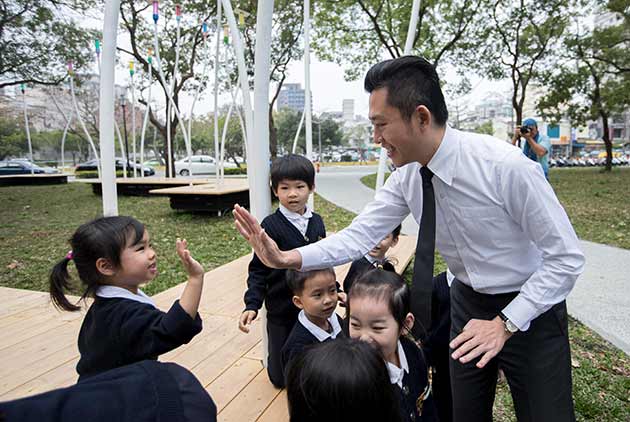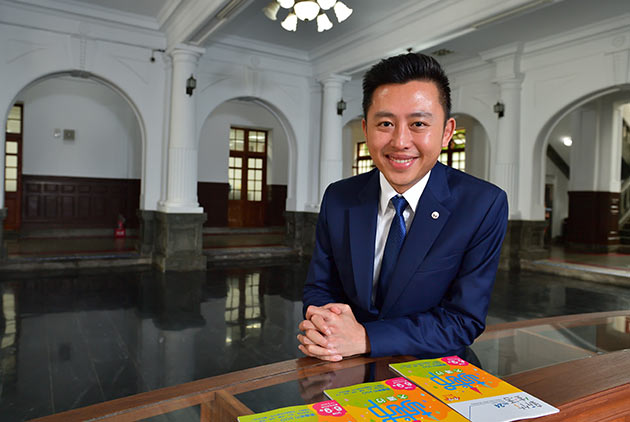The Tech Hub's Past, Present and Future Glory
Hsinchu: More than Rice Noodles and Tech

Source:The Hsinchu City Government
The city of Hsinchu has much more to offer than traditional cuisine and microchips. Over time, the forefathers who settled in the area around the Long-en Weir on the Touqian River some 300 years ago built a unique history and culture. Their descendants continue to innovate and improve their environment. Let’s take a look at the city’s past, present and future as presented at the recently concluded Hsinchu 300 Expo, which marked the city’s 300th anniversary.
Views
Hsinchu: More than Rice Noodles and Tech
By The Hsinchu City GovernmentSponsored Content
Hsinchu Mayor Lin Chih-chien loves his city’s scenic location between the sea and mountains as well as its cultural flair so much that he never left, not even for studies or during his compulsory military service. “Hsinchu is a city that fills people with pride. I have very deep feelings for this city and am confident that its beauty will impact more people,” he says.
Highlighting 300 Glorious Years: Past, Present and Future
Generally speaking, the city of Hsinchu developed along the Touqian, Keya and Yanshuigang rivers, which wind their way through the city, witnessing the city’s growth, the rise and fall of different industries, and the everyday life of local citizens.
In 1718, during the Qing Dynasty, Wang Shi-chieh brought the first Chinese settlers to the Long-en Weir, founding Hsinchienpu, the cradle of the future city. Three centuries later, the Hsinchu 300 Expo, which took place at the Hsinchu Cultural and Creative Museum from July 21 to July 29, showcased the city’s history, urban construction, innovative technologies and future vision to reacquaint visitors with Hsinchu’s past, present and future.
“Since Hsinchu developed very early, it has a very rich historic legacy with many historic relics spread across the city center,” says Lin. “But not long after that, as the times and the industry in northern Taiwan changed and the science park evolved, many people saw themselves as Hsinchu Science Park people, and their identification with the city waned.”
Lin harbored a dream that more citizens could rediscover the city’s splendor. After taking office, he began to make plans for rehabilitating and restoring the Long-en Weir, which had quietly witnessed the city’s development for three centuries. He hoped to restore the weir as an integral part of city life to its old glory.

Deeper Cultural Awareness, Innovative Approaches for 2050
The Hsinchu City Government is making active efforts to let local residents become better acquainted with their city from a cultural and educational perspective. Every year, the city gives away picture books featuring different city-related themes to children at elementary school entrance ceremonies to introduce parents and children to Hsinchu’s many cultural facets and scenery.
The city government also organizes symposiums and campus events in connection with the Hsinchu 300 Expo to discuss history, waterways, infrastructure and architecture to entice more citizens to get involved and imagine the city’s future together with city administrators as they plan City Vision 2050. In early June, more than 10,000 people joined a spectacular parade with 42 original local teams. The parade passed through the streets and alleys of the early settlements and past landmarks such as the Chenghuang Temple, sparking many citizens to talk about their city, get involved and take notice of its bright past and urban qualities.
The six exhibition areas at the Hsinchu 300 Expo highlighted outstanding aspects of the city, such as high income levels, high education levels, and a population with the youngest average age in Taiwan. On top of that, the Expo showcased urban farms, a friendly environment, sharing communities and other factors making Hsinchu a “Cool and Warm City”, building block creations in combination with artificial intelligence for “Maker City”, “Immortal City”, which presented 300 years of the city’s history, and “Cute City”, which envisaged a child-friendly environment. “Roaming City” offered a 3D model of the Great Hsinchu Station Project and invited visitors to envisage the city’s future up to 2050.

Tangible Infrastructure Construction for a Livable City
Only happy people know to create happiness, says Mayor Lin: “Happiness is seeing contented smiles on the faces of our citizens. I firmly believe that it is very easy to make people happy if the city treats people’s small issues as its important business.”
The Hsinchu City Government is looking for ways to improve people’s everyday life. Excavation work for laying pipes and cables is well planned to ensure smooth road surfaces. Since the city lacks parks, the city has collated a list of plots reserved for greenery as well as vacant plots of land to beautify public spaces and plant trees to create an urban forest. Linking the city’s existing green belts with the blue belts of its rivers, the “Forest of Hsinchu” is the best place for citizens to take leisurely walks or take some time out for a rest on busy days.
Also worth mentioning is the restoration project for the Nanliao fishing port, removing the unsightly concrete wave breakers commonly found along Taiwan’s coasts and replacing them with artificial beaches created with sandy sediment dredged from the harbor basin. With its scenic views and direct access to the sea, the revamped port is an ideal place for a pleasant outing with the whole family.
Aside from investing in hard infrastructure, the Hsinchu City Government is also actively devoting resources to better care for the less concrete needs of its citizenry. The city subsidizes dentures for all elderly citizens and pays them a pension. “Joint dining halls” in local communities aiming to ensure that older people can enjoy human company during their meals rather than having to eat alone in front of the TV screen are very popular.
As Hsinchu strives to become even more child-friendly, qualifications for kindergarten subsidies will be lowered to the age of four, and new child-oriented resources will be created, including a pediatric hospital and a children Exploratorium. New schools are being built, and elementary and junior high schools are being equipped with air conditioning. The city also boasts the first publicly built and run Waldorf education school in Taiwan, providing an excellent learning environment and a well-rounded education.
As we face an uncertain future, it takes innovation and the courage to overturn established approaches to bring a new shine to a city. The Hsinchu City Government is also promoting a series of urban renewal and improvement projects such as the renovation of the Hsinchu Baseball Stadium, the Great Hsinchu Station Project, and the Hsinchu Science Park X Project to further increase the happiness of its citizenry.
Translated by Susanne Ganz
Edited by HanSheng Huang
This content is sponsored by the Hsinchu City Government
Additional Reading
♦ HsinPu Persimmons, Golden Pearls of Wisdom
♦ Lifting Up the ‘Sandwich Generation’: Lin Chih-Chien
♦ The Hakka Cultural Renaissance Memories Along a Mountain Route







